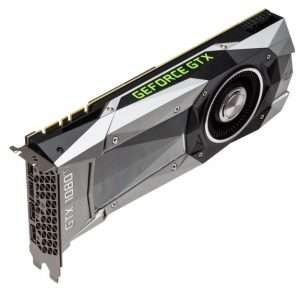
As cryptocurrencies and the technology that supports them become more popular and mainstream, more and more everyday people are getting involved in all aspects of the industry.
People don’t want to just log onto an exchange and purchase coins, they want to understand how to mine them for themselves.
As exciting as it sounds, it is not the easiest procedure to undertake and it does require a degree of technical understanding as well as considerable hardware and electrical power.
If mining cryptocurrencies is something that you have considered or even looked into, you may have come across the terms CPU mining and GPU mining.
But what are they and what is the difference between CPU and GPU mining?
In this article we will discuss:
- Cryptocurrency Mining.
- CPU/ GPU Mining.
- Other Types.
- Which one is the best for you?
What Is Cryptocurrency Mining?
 Cryptocurrency mining is the process of both adding a new transaction to the blockchain (through securing and verifying) as well as releasing new currency/coins. These new, individual blocks are added by miners and contain either a proof-of-work or POW.
Cryptocurrency mining is the process of both adding a new transaction to the blockchain (through securing and verifying) as well as releasing new currency/coins. These new, individual blocks are added by miners and contain either a proof-of-work or POW.
In order to mine a currency, the user needs a specialised mining computer as well as a programme which enables the miner to compete with other miners, with the aim of finding solutions to complex mathematical problems.
This process requires immense computational power, electricity, and hardware capable of undertaking such a task. The miner attempts to solve each block using a cryptographic hash function at regular intervals.
The hash is a numeric value that has a specific length and is used to identify data.
The miners use their computer to hone in on a hash value that is less than the target, and whoever is the first miner to crack the code would be the one that mined it and would, therefore, receive the reward.
When mining first started, it was only cryptography experts that would get involved in the process, but as the popularity of cryptocurrencies has increased, as well as increasing drastically in value, many amateurs have decided to try their hands at it as it has become a lucrative past time.
Now, there are two types of miners – those that mine with a single computer setup and those who have set up mining farms that continuously mine coins on a large scale.
In order to compete with these larger mining farms, individual miners have formed mining pools which allow them to combine resources and then share the rewards, which makes it much more cost effective than mining solo.
To set up a mining kit, a potential miner would need special graphics cards, a computer processor, a power supply, memory, cables, and a cooling fan that combined, would total a cost of approximately $3800.
For more technical details, read our guide to Cryptocurrency Mining.
Different Kinds Of Cryptocurrency Mining
There are several different methods of cryptocurrency mining; CPU, GPU, ASIC, and FPGA- if you aren’t sure what this means, then don’t worry- here is a bit of information on each.
What Is a CPU?
CPU stands for Central Processing Unit and it refers to the component of a computer which has the responsibility for interpreting and then executing the commands from the hardware and software that is attached to the rest of the computer.
Many different kinds of devices use CPUs- desktop computers, laptops, your tablet, smartphones, smart televisions and even games consoles.
Two of the most popular computer CPU manufacturers are Intel and AMD, whereas, with smartphone and tablet CPU manufacturers, the big names are Apple, NVIDIA and Qualcomm.
You might hear CPUs being referred to by other names and these may include a computer processor, processor, microprocessor, central processor, or even “the brain of the computer”.
Sometimes the computers hard drive is referred to as a CPU but this is completely incorrect and they are very different things.
CPUs tend to be small and square with short metal connectors underneath them although some of the older models of CPUs have pins instead.
When using a CPU it is common that they get very hot and this is why it is often necessary to attach a fan or cooler to the device to keep it at a safe temperature. For those with a greater need for cooling, it is possible to get water cooling kits and phase change units that keep it at a much more regulated temperature.
The last thing to note about CPUs is the fact that some will have a single-core processor, whilst others may have a dual-core or quad-core processor.
The more cores that a processor has, the more powerful it is and the more instructions it can manage every second which means that its performance is much higher.
Some CPUs have the ability to visualise two cores for each available core and this is referred to as Hyper-Threading, meaning that the potential power can be doubled That said, physical cores do tend to function better than virtual ones.
What Is a GPU?
A GPU is a Graphics Processing Unit and it is a logic chip/processor that is programmed to specifically handle display functions. A GPU works specifically with the rendering of images, animations and other types of an image for the screen of the computer.
GPUs are typically located on a plug-in card which is found either in the chipset on the motherboard, or in the CPU.
Although the GPU is used for 2D data as well as for tasks such as zooming or panning, it is an essential requirement for 3D animations and videos.
The more high-tech and sophisticated that your GPU is, the better the resolution and speed will be when it comes to rendering videos and movies.
You can opt for a GUP that functions on a stand-alone card with its own RAM, or you can get a GPU that is a part of the chipset or CPU.
A GPU processes multiple operations across multiple sets of data and they are often used as vector processors for various applications that require repetitive computations or actions.
What Is CPU Mining?
When we refer to CPUs in the context of CPU mining, we are talking about the process of generating a cryptocurrency coin and securing the network it is running on.
As we have already discussed, the CPU processor is found on any computer and these type of processors are used for mining when a coin is first released.
This is due to the fact that coins at this stage are very easy to mine, but as the difficulty increases, it is necessary to upgrade the mining computer to something a little more powerful.
For example, back in the early days of Bitcoin, it was possible to use a simple CPU to mine but as its popularity grew, the hash rate of the network got to such a level that the number of Bitcoins mined by CPU mining became less than the cost of mining meaning that it became financially unviable.
What Is GPU Mining?
The short answer is that GPU mining is the more powerful and lucrative version of CPU mining and yields a much better return on investment.
GPUs offer a much higher level of processing power which in some cases are up to 800 times more than that of a CPU.
As mining is the process of solving complicated cryptographic equations and in order to do this, a lot of hardware power is needed.
This was once done by CPUs, but then miners realised that a graphics card could do a much better and much more efficient job. In a regular setup, three graphics cards will be inserted into a mining rig and then set to work solving calculations in return for the cryptocurrency.
What Other Types Are There?
If you don’t want to use CPU or GPU mining, there are two other options but they are not as accessible or popular as the aforementioned methods.
ASIC
ASIC stands for Application Specific Integrated Circuit and it is a particular type of microchip that has been designed especially for an application such as a transmission protocol or a hand-held computing device.
ASICs are used in a large range of applications such as personal digital assistants, environmental monitoring, and of course cryptocurrency mining.
You can purchase an ASIC pre-manufactured for a specific purpose or you can custom manufacture it using a variety of components from a building block, for a specific need.
In terms of cryptocurrency mining, an ASIC is an integrated circuit that has been specially customised for the purpose of mining. They were the next step in evolution after CPU, GPU and FPGs and are easily capable of outperforming these platforms.
They are more efficient, quicker, and mine more coins in less time than any other kind of processor.
FPGA
FGPA stands for a Field Programmable Gate Array and it is an integrated circuit which is configured by the customer or developer once it has been manufactured.
The FPGA language is often specified using a particular type of hardware description language (HDL) similar in a way to those used for an ASIC.
An FPGA contains programmable logic components that are otherwise known as “logic blocks” as well as a hierarchy of reconnects that can be reconfigured and wired together. These blocks can be configured to facilitate and perform a range of complex combinational functions.
FGPA mining is an extremely fast and efficient way to mine proof-of-work based cryptocoins.
It is comparable to GPU mining it outperforms CPU mining but it is not as powerful as ASIC mining. The integrated circuit is specially configured for Bitcoin mining but it is not as power-consuming as other methods.
Which Is The Best For You?
When we consider which is the best for you as a miner, there are several considerations to take into account.
Firstly, it depends on whether you are looking to mine for fun or curiosity, or whether you are actually looking to make some serious money from it.
If it is the latter, then ideally you would opt for ASIC mining which offers much quicker, efficient, and low-cost mining capabilities meaning there are more rewards for you to reap.
If you are determined to choose between the differences of CPU and GPU then the obvious choice has to be GPU.
Using a graphics card, or a series of graphics cards in your rig will offer you the highest level of processing power.
CPUs are all but obsolete as they are having to compete with such powerful methods of processing. You could give it a go, but unless you have decades to wait and are fine with getting an incredibly high phone bill, then I would recommend avoiding it.
Getting yourself a GPU rig does not have to cost the earth and if you do it right, there is no reason why you shouldn’t be able to make any profit on your mining venture, and at the very least, you will break even.
Of course, if you want a slightly easier way to acquire coins, then you should just sign up to an exchange and purchase a portfolio of various different cryptocurrencies with just a click of a few buttons.
This way you do not have to worry about spending a fortune on expensive hardware, cooling systems and rather high electricity bills, but of course, the choice is yours.
After reading about the difference between CPU and GPU mining, you might want to check out another guide that explains the difference between Proof-of-Work vs Proof-of-Stake.



![Bitcoin Buyer Review of Official Website [2022] bitcoin buyer review featured image](https://bitemycoin.com/wp-content/uploads/2022/04/bitcoin-buyer-review-featured-218x150.jpg)
![Bitcoin Digital | Official Website Review [2022] bitcoin digital review featured](https://bitemycoin.com/wp-content/uploads/2022/04/bitcoin-digital-featured-218x150.jpg)







